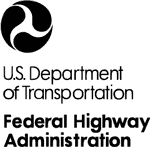U.S. Department of Transportation
Federal Highway Administration
1200 New Jersey Avenue, SE
Washington, DC 20590
202-366-4000
Federal Highway Administration Research and Technology
Coordinating, Developing, and Delivering Highway Transportation Innovations
| FACT SHEET |
| This fact sheet is an archived publication and may contain dated technical, contact, and link information |
| Publication Number: FHWA-HRT-10-075 Date: September 2010 |
Publication Number: FHWA-HRT-10-075 Date: September 2010 |

|
Harnessing The Value of Ecosystems - The Concept of Ecosystem Service MarketsExploratory Advanced Research . . . Next Generation Transportation Solutions PDF Version (367 KB)
PDF files can be viewed with the Acrobat® Reader® |
 |
|
|
|
Ecosystem Service Markets BackgroundThe fundamental concept of ecosystem service markets (ESM) is that many services an ecosystem provides can be valued then bought and sold on an open market. The long-term vision is that service providers and buyers can then meet in a virtual marketplace that is regulated and approved by agencies with legal authorities under legislation, such as the Endangered Species Act or the Clean Water Act. |
These services result in a tradable commodity, such as tons of carbon or phosphorus, or a risk management tool, such as insurance against extinction of a species. Such a compliance market already exists under the Clean Air Act for sulfur dioxide pollution, and the Chicago Climate Exchange currently operates a voluntary but legally-binding commodities market for greenhouse gases. In addition, mitigation banking for streams and wetlands already exists, but the market remains far from being as efficient as real estate, and farther still from markets trading stocks or commodities.
The Ecosystem Service Markets (ESM) workshop drew experts from Government agencies, universities, and regulatory and market agencies, who all reported on how the ESM concept is currently being designed and executed within laws, regulations, and policies.
One of the most important benefits of ESM is that it offers larger-scale, better prioritized mitigation that yields demonstrably improved ecosystems. Without better ecosystem performance, the market concept would struggle to move forward with regulatory and conservation agencies.
Another major benefit to emerge is the expected reduction in compliance costs, achieved by increasing the supply of providers. The establishment of markets and the ability to make money is expected to drive increased data collection, leading to a better understanding of ecosystem function and the inherent risk of certain actions. The concept also offers better tools for linking buyers and sellers and in addition provides upfront acceptance of market standards and performance measures by regulatory agencies, yielding faster permitting.
There are many significant research challenges when implementing ESM. One challenge is how to effectively mitigate for slow-developing ecosystems, such as old growth forests or coral reefs that develop over thousands of years. Another is maintaining genetic diversity—when a species is reduced to a small number of individuals the genetic pool becomes extremely limited, which can result in the collapse of the remaining populations. Developing answers to these questions in a market context will greatly expand the ability to use markets for conservation.
During the workshop, several examples were provided to demonstrate different ways the ESM concept is currently being developed and implemented within laws, regulations, and policies;
One project featured was from The Freshwater Trust, showing how the organization uses the software platform StreamBank to help speed water conservation projects. The software cuts project completion time by simplifying the permitting process. Currently it takes 3 years to repair 1 mi (1.61 km) of stream, and there are 80,000 stream miles in the Trust's territory.
Participants were also presented with an example of a successful public cap and trade system from Virginia's Nutrient Trading Program. In this case, dischargers of nitrogen and phosphorus along the State's tributary system operate under a single permit to limit the damage to the Chesapeake Bay Watershed. Studying the monetary worth of coastal wetlands protection from hurricane damage was the focus of the University of Denver's work. Its complex database and mathematical analysis demonstrates the high value of wetlands and the importance of location.
Another featured project came from Advanced Conservation Strategies. This example demonstrates an alternative for developing markets by focusing on outcomes and performance. Using hypothetical examples of endangered species, it is possible to see how bonds and derivatives can be used to shift the risk to the marketplace and align incentives of all involved parties. Finally, The Chesapeake Fund highlighted the complexity of ESM. Workshop participants were told that only through public policy changes can efficient and expedient markets be created to allocate risk appropriately.
Advancing ESM could potentially provide the transportation industry an alternative means of compliance with environmental laws that results in faster permitting, as well as less expensive and better performing mitigation. Many issues of policy and science must be addressed before a one-stop shopping market will come to fruition that would work for both the regulatory and regulated communities.
"Realizing the benefits of ESM will require straightforward, accurate systems to measure and track performance, and will potentially require revision of existing policies, regulations, and legislation," says Steve Earsom at FHWA. "Valuation of the full suite of ecosystem services will remain controversial for the foreseeable future but the workshop certainly gave participants a better understanding of the ecosystem service components that have existing or developing markets, the major impediments to a market-based approach, and how industry leaders are developing tools to resolve these."
For more information or to discuss ESM, contact Steve Earsom at FHWA, at 202-366-2851 (email: steve.earsom@dot.gov).
|
What Is the Exploratory Advanced Research Program? FHWA's Exploratory Advanced Research (EAR) Program focuses on long–term, high–risk research with a high payoff potential. The program addresses underlying gaps faced by applied highway research programs, anticipates emerging issues with national implications, and reflects broad transportation industry goals and objectives. To learn more about the EAR Program, visit the Exploratory Advanced Research Web site at www.fhwa.dot.gov/advancedresearch. The site features information on research solicitations, updates on ongoing research, links to published materials, summaries of past EAR Program events, and details on upcoming events. For additional information, contact David Kuehn at FHWA, 202–493–3414 (email: david.kuehn@fhwa.dot.gov), or Terry Halkyard at FHWA, 202–493–3467 (email: terry.halkyard@fhwa.dot.gov). |

